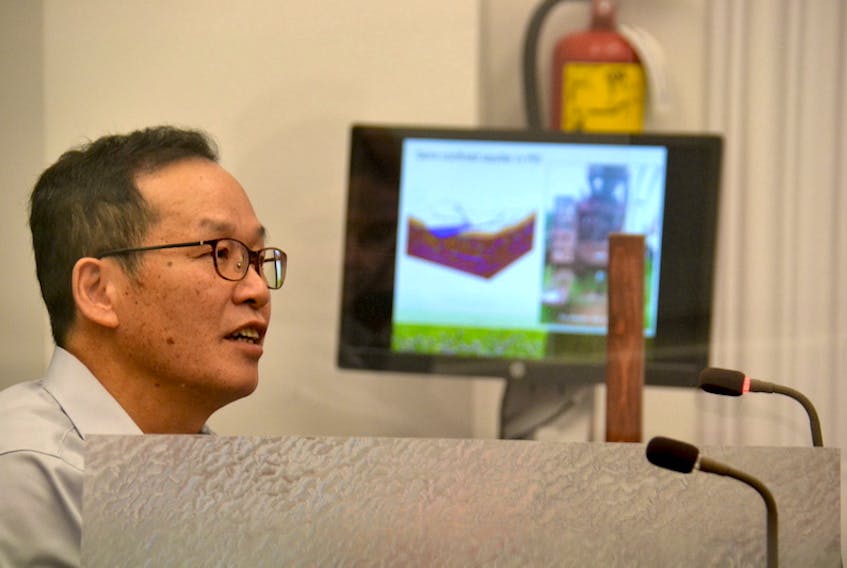A model developed by a hydrogeologist suggests that, in a dry growing year, expanded agricultural irrigation from high capacity wells could have a significant impact on water levels in Island streams.
Yefang Jiang, a hydrogeologist with Agriculture Canada, told members of the standing committee on natural resources and environmental sustainability that he had prepared a model to predict the impact of expanded agricultural irrigation on the Wilmot River watershed.
Jiang’s models were based on base flow levels observed in 2000 and 2001 in the Wilmot watershed.
"I simulated two years, 2000 and 2001. Why did I pick 2001? Because that was a historic dry year," Jiang told members of the committee.

Some farmers have compared this summer’s dry growing conditions to the dry conditions observed in 2001.
Jiang’s model found that a significant increase in agricultural irrigation during a summer with 2001-like conditions would have reduced the streamflow by 40 per cent in the Wilmot River watershed.
Jiang assumed that all potato fields surrounding the Wilmot River would make use of more intensive irrigation, and that most irrigation would take place in July and August. He assumed 10 inches of water would be applied due to the drier conditions.
"If you don't pump the right amount, you pump a lot, you could potentially bring the water to a low level," Jiang said.
A moratorium on high capacity wells for agricultural irrigation has been in place since 2002. The province’s new Water Act, likely to be proclaimed this fall, would uphold this moratorium for the time being.
But in February, officials with the Department of Environment, Water and Climate Change suggested to members of the standing committee that P.E.I. had ample water resources. The officials said agriculture accounted for only two per cent of P.E.I.’s groundwater use, and that only 35 per cent of P.E.I.’s total groundwater recharge is available for human use.
What is water recharge?
- Recharge refers to water from precipitation that flows through the soil and then enters the groundwater flow system, contributing to replenishment of the aquifer.
Groundwater discharge contributes to 65 per cent of the annual streamflows in P.E.I. rivers. Some conservation groups have expressed concern about the impact that expanded use of high capacity wells could have on aquifers and aquatic ecosystems.

The P.E.I. Federation of Agriculture (PEIFA) has called on the province to lift the moratorium. In September, PEIFA president Ron Maynard said the continued moratorium was “discriminatory towards the industry” as other forms of non-agricultural groundwater extraction are not subject to it.
On Thursday, Jiang told the committee issues of groundwater extraction should be looked at in terms of the impacts during dryer summer months.
Water recharge from rain or snowmelt occurs during the fall, winter and spring.
"The problem here is, we have a lot of water. But the water normally comes in the season where nobody wants water,” Jiang said. “But in the season you want water, there is very little storage in the aquifer."

UPEI researcher Michael van den Heuvel has proposed a three-year study on the impact of high capacity wells on streamflow levels. The study would require a legislated exemption from the moratorium to proceed.
Jiang did not declare an opinion on whether or not maintaining the moratorium on high capacity wells is desirable.
"The question is more political than it is scientific, isn't it, on whether or not that's an acceptable risk to the stream?" asked Green MLA Lynne Lund on the question of high capacity wells.
"I think this is the question you (will) answer. I cannot answer that question for you,” Jiang said. "It's a value decision, what's acceptable. There's no solid science to say so yet."









